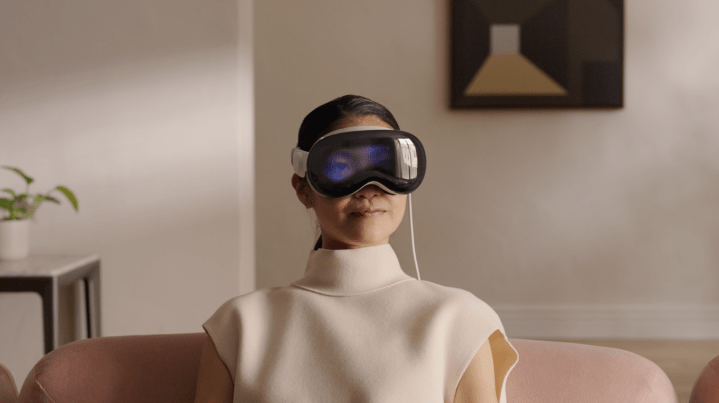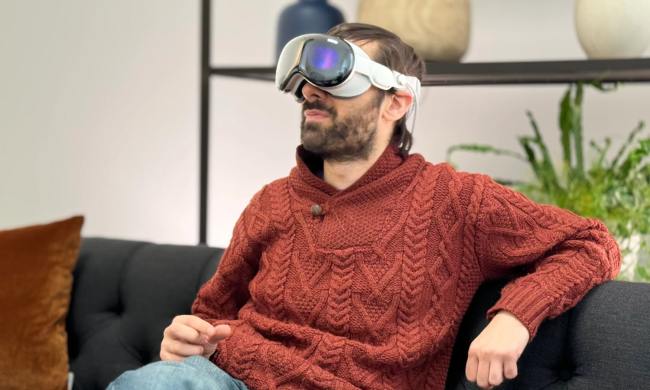There are still a ton of mysteries surrounding Apple’s Vision Pro headset, and one of them is how the device will work with prescription lenses. A new patent might have shed some light on that, and it reveals a pretty remarkable idea from Apple.
According to the recently published patent (number 20230258944), the Vision Pro could use lenses made out of liquid instead of glass. This would apparently allow them to be highly customizable, allowing you to fine-tune them to perfectly match your prescription and your vision needs. After we learned that the next Vision Pro could send you on a mood-altering trip, it’s another instance of Apple envisioning a wacky idea to elevate its headset.

The latest patent states that “Each lens may have a lens chamber filled with liquid. The lens chamber may have rigid and/or flexible walls that form optical lens surfaces.”
It goes on to explain that “Actuators and/or pump and reservoir systems may deform the lens surfaces in response to control signals from a control circuit to tune the lens.” In other words, you’d press a button or rotate a dial on the headset and the device would morph the lenses accordingly.
The way this would work is a little technical. Apple describes how “Inorganic dielectric particles or other refractive- index-adjustment particles may be used to adjust the refractive index of the liquid in the lens chamber and thereby adjust the refractive index of the lens.”
Liquid gold

Liquid lenses are not the only way the patent aims to improve the visual experience for headset wearers. To account for differences in users’ eyes, the Vision Pro could adjust the spacing between its eye modules so that they better align with your pupils.
This could be done by gathering information on the position and location of a user’s eyes using cameras, then providing a way to adjust the eye modules’ positioning (this could be done manually by yourself or automatically by the system).
The patent follows another that was published in July 2023, which outlined how a pair of augmented reality glasses may come with adjustable lenses that could be tweaked on the fly using the device’s Digital Crown.
While that revealed that Apple was working on implementing adjustable lenses into future products, the patent didn’t mention the possibility of using liquid instead of glass. The most recent patent has brought that idea to the surface.
It all suggests Apple is thinking carefully about how to account for users with different visual needs. We can’t know if its ideas are on the money just yet, but whether the company gets it right will come into sharp focus when the Vision Pro launches sometime in 2024.



